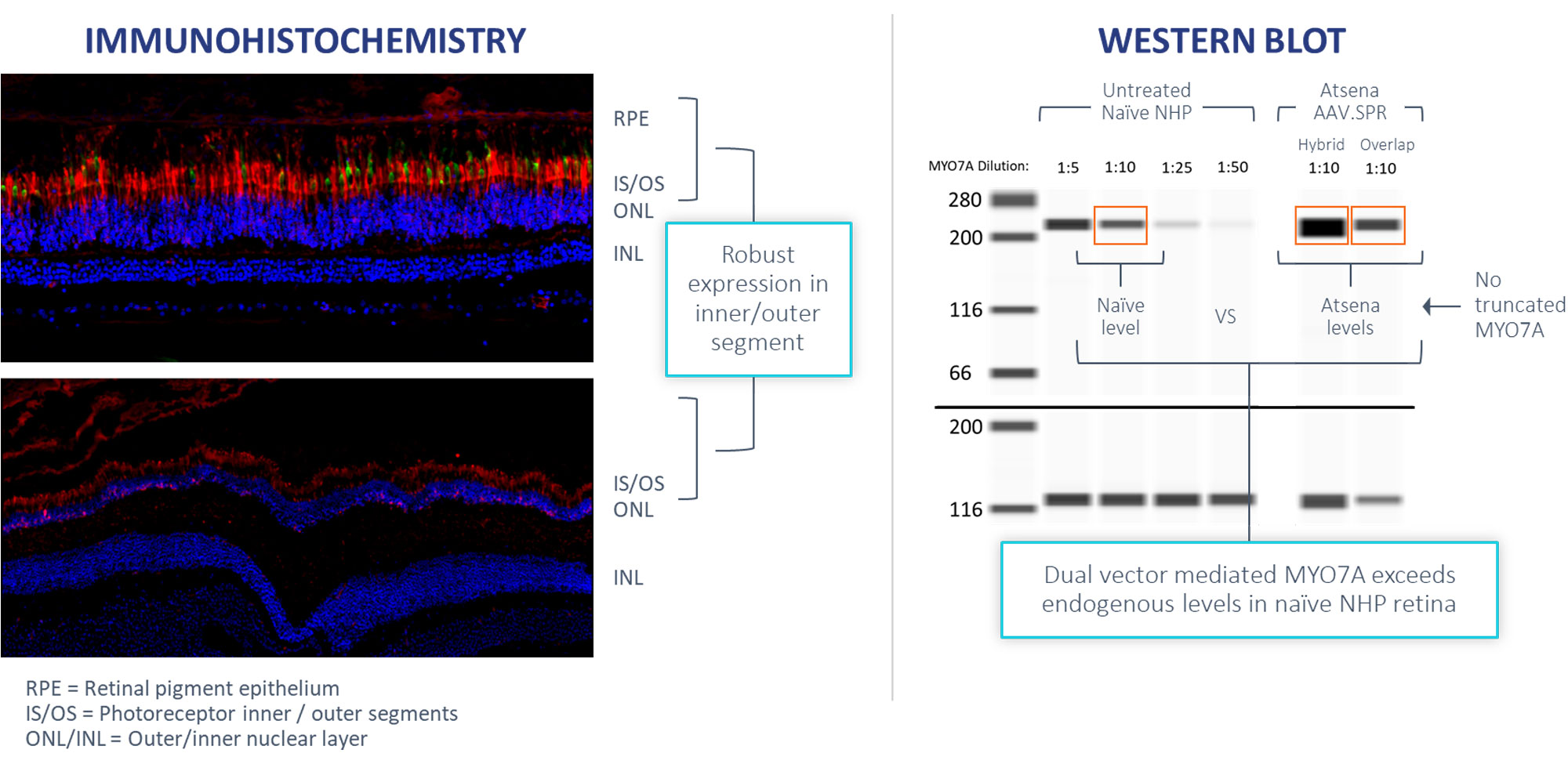Our dual vectors are constructed to deliver larger payloads for genetic mutations that are too large to treat with a single AAV vector.
Credit: MoA animation by Visual Science, 2022
Our dual vectors generate normal levels of expression in non-human primate retina

Atsena is leveraging a dual AAV vector approach in a preclinical program for MYO7A-associated Usher Syndrome (USH1B). Because the MYO7A cDNA is too long to fit in a single vector, it is split in half and each half is delivered via a separate AAV vector. Upon co-infection of cells with both vectors, the gene halves recombine to form full length MYO7A.
